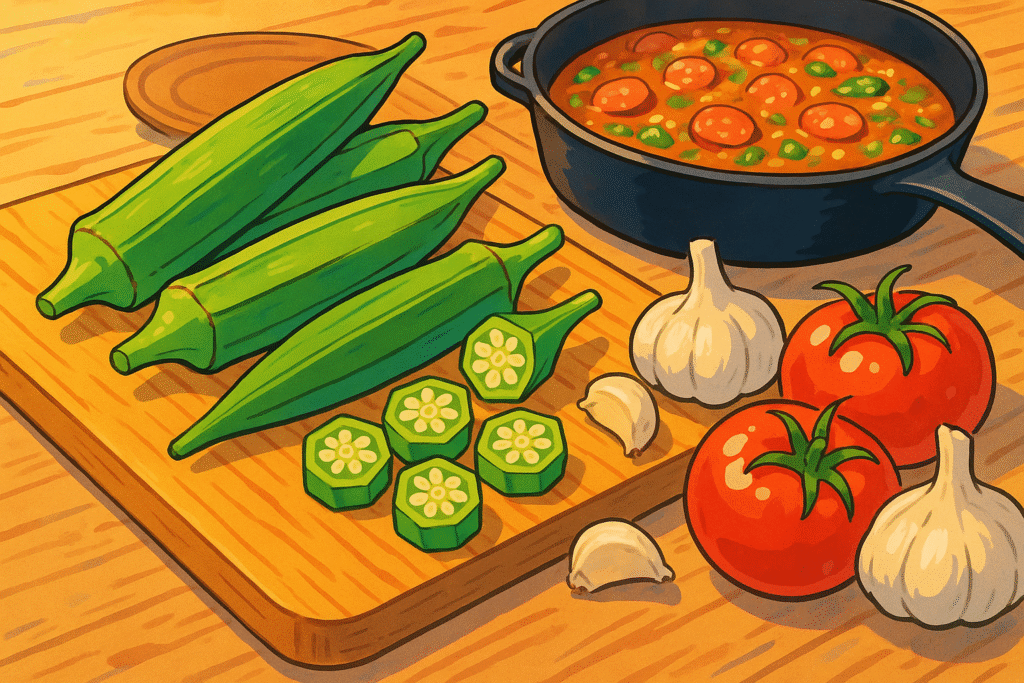Okra (Abelmoschus esculentus)

About Okra
Okra is a green seed pod known for its ridged sides and gelatinous interior — a texture that thickens stews and divides dinner tables.
It’s nutty, grassy, and surprisingly adaptable: fried crisp, grilled whole, pickled, or simmered into gumbo. For those who embrace the slime, okra is gold.
The History of Okra
Okra hails from West Africa and traveled to the Americas via the transatlantic slave trade. It took root in Southern U.S. cuisine, becoming a pillar of Creole and Cajun dishes like gumbo.
It’s also a staple in Indian, Middle Eastern, Caribbean, and Ethiopian cuisines — often going by names like bhindi or bamia.
The Science of Okra
Okra is rich in vitamin C, folate, fiber, and antioxidants. Its trademark slime comes from mucilage — a soluble fiber that helps thicken liquids.
This mucilage is also soothing for digestion and gives okra its textural uniqueness.
The Geography of Okra
Okra grows in hot, humid climates. It thrives in India, Nigeria, Sudan, and the American South. It’s drought-tolerant, fast-growing, and harvested young before it becomes fibrous.
In India, it’s flash-fried into crispy bhindi masala. In West Africa, it’s simmered into stews with peanuts or egusi.
Varieties of Okra
Clemson Spineless
Popular U.S. variety. Long pods, no spines, and great flavor.
Red Burgundy
Vibrant burgundy color that fades when cooked. Striking in salads or pickled.
Annie Oakley II
Compact, hybrid variety — perfect for small gardens.
Perkins Long Pod
Heirloom Southern variety with classic taste and texture.
Emerald
Smooth, dark green pods with tender texture and minimal slime.
FAQs All your questions about Okra: answered
How do you reduce the slime in okra?
Quick frying, high-heat roasting, or adding acid like vinegar or tomatoes can help reduce mucilage.
Is okra healthy?
Yes — it’s high in fiber, vitamin C, and antioxidants.
Can you eat okra raw?
You can! It’s crunchy and grassy, with much less slime when uncooked.
Why is okra used in gumbo?
Its mucilage thickens the broth, adding body and richness to the dish.